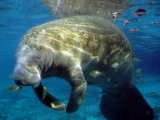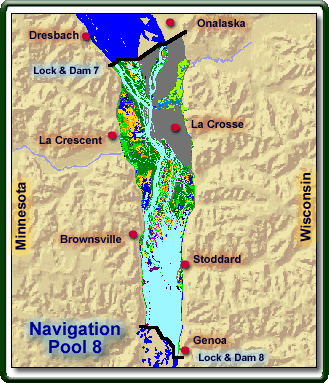- Home
- About S&T
- Taxa/Organisms
- Ecosystems
- Issues
- Methods & Tools
- Reports & Publications
- Location
- Search
Publisher: USGS | Science Center: Florida Integrated Science Center (FISC, Gainesville) | Format: URL
fl.biology.usgs.gov — Web page for the Sirenia Project, a USGS Florida Integrated Science Center project that conducts studies on the West Indian manatee (Trichechus manatus). Includes links to manatee research in the news, international research, publications and presentations, and project staff contact information.

2007 | Publisher: Other (Ecological Society of America) | Format: .PDF
www.nrmsc.usgs.gov — Every winter, government agencies feed ;6000 metric tons (63 106 kg) of hay to elk in the southern Greater Yellowstone Ecosystem (GYE) to limit transmission of Brucella abortus, the causative agent of brucellosis, from elk to cattle. Supplemental feeding, however, is likely to increase the transmission of brucellosis in elk, and may be affected by More...

Publisher: USGS | Science Center: Forest and Rangeland Ecosystem Science Center (FRESC, Corvallis) | Format: URL
fresc.usgs.gov — The river otter (Lontra canadensis) is a top predator of most aquatic food chains. The goal of this study is to further evaluate the relationship among the contaminants and observed reproductive organ hypoplasia in young male river otters, their occurrence, and mode of action or mechanism that causes hypoplasia with a larger series of data from More...

Publisher: USGS | Science Center: Florida Integrated Science Center (FISC, Gainesville) | Format: .PDF
fl.biology.usgs.gov — Health assessments are a valuable tool to determine the fitness, specifically related to environmental and medical issues, of any population of wildlife. Marine mammals, such as manatees, are often used as sentinels for emerging threats to the ocean environment and human health. A two-team approach is used to capture and exam manatees. The More...

Publisher: NBII | Format: URL
www.nbii.gov — Natural resource managers face complex decisions that require a clear understanding of the status of wildlife populations and their habitats. Monitoring is key to making effective management decisions and evaluating the outcomes of those decisions. The goal of NRMP is to improve the accessibility of monitoring efforts to resource managers to aid More...

Publisher: USGS | Science Center: Fort Collins Science Center (FORT, Ft. Collins) | Format: URL
www.fort.usgs.gov — Natural Resource Monitoring Partnership (NRMP) is a collaborative effort by the natural resource management community to improve monitoring efforts in order to support effective evaluation and decision-making by sharing information on monitoring projects and protocols. The Natural Resource Monitoring Partnership was built for easy access to More...

Publisher: USGS | Science Center: Upper Midwest Environmental Sciences Center (UMESC, LaCrosse) | Format: URL
www.umesc.usgs.gov — The diversity of habitat types, plants, and animals in the Upper Mississippi River has declined considerably over the last 50 years, creating loss of aquatic vegetation, loss of islands and side channels behind dams, and changes in river sediments, potentially caused by the method of managing water levels, which maintains artificially high water More...
